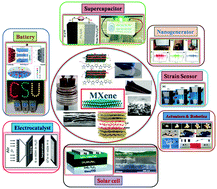Current trends in MXene research: properties and applications
Abstract
A new class of two-dimensional (2D) materials known as MXene became one of the most promising candidates under investigation after the discovery of the first member of this group, Ti3C2Tx, in 2011. These layered transition metal nitrides, carbonitrides, and carbides have offered an attractive new area in inorganic 2D materials with their fascinating structural and chemical characteristics due to the versatility in elemental compositions and surface terminations. Significantly, the surface hydrophilicity of MXenes facilitates the easy composite formation with carbonaceous materials, polymers, and metal oxides that further opens up an efficient pathway for tuning the characteristics of MXenes for different applications. Despite exponentially increasing interest, MXenes lack proper systematic information. This article is focused on reviewing the most applicable aspects of MXenes including structural features with their relevant characteristics and applicability by describing both experimental and theoretical perspectives. A critical survey on current trends, status, and possibilities of MXenes and MXene-based materials have been represented for energy-related applications as well as electromagnetic interference (EMI) shielding, blends and composites, sensors, organic light-emitting diodes (OLED), and actuators and robotics associated with the limitations and future potentialities.

- This article is part of the themed collection: 2021 Materials Chemistry Frontiers Review-type Articles


 Please wait while we load your content...
Please wait while we load your content...